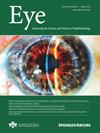Between Scylla and Charybdis?—Health insurance claims-data to monitor quality of service delivery in ophthalmology
IF 2.8
3区 医学
Q1 OPHTHALMOLOGY
引用次数: 0
Abstract
The seminal work of Wennberg and Gittelsohn in 1973 emphasised the importance of health information for informed decision-making. This led to the creation of the Dartmouth Health Atlas in 1996, which has become an important resource for monitoring health services in the USA. The Dartmouth Health Atlas research revealed the existence of variation in health care without benefit to patients, and the dependence of health care use on local resource supply. Similar initiatives emerged around the world, from the UK to Asia. The availability of administrative data has become essential for evaluating health service delivery and for informing health economic analysis and policy decisions. Access to data depends on the organisation of the health system, with more centralised systems facilitating comprehensive data collection. We contrast the decentralised structure of the Swiss healthcare system with that of the US and the UK, and highlight the challenges of harmonising data for nationwide health monitoring. The example of optical coherence tomography (OCT) in Swiss ophthalmology illustrates the variability in care practices and billing patterns. This variability can be attributed to the lack of clear guidelines and the complexity of billing codes. Incentives to charge incorrect rates influence billing, adding a further variance component to the variance in care that cannot be subtracted from the total variance at the level of a health insurance fund and distorting the results. In certain environments the quality of data on care is so variable that a sound conclusions for health policy decisions represent a great challenge.在 Scylla 和 Charybdis 之间?-用于监测眼科服务质量的医疗保险索赔数据
1973 年,Wennberg 和 Gittelsohn 的开创性工作强调了健康信息对知情决策的重要性。达特茅斯健康地图集》也因此于 1996 年问世,并成为监测美国医疗服务的重要资源。达特茅斯健康地图集》的研究揭示了医疗服务中存在的对患者无益的差异,以及医疗服务的使用对当地资源供应的依赖。从英国到亚洲,世界各地都出现了类似的举措。行政数据的可用性已成为评估医疗服务提供情况、为医疗经济分析和政策决策提供信息的关键。数据的获取取决于卫生系统的组织结构,集中式系统更有利于全面收集数据。我们将瑞士医疗保健系统的分散结构与美国和英国的结构进行了对比,并强调了协调全国范围内的健康监测数据所面临的挑战。以瑞士眼科的光学相干断层扫描(OCT)为例,说明了医疗实践和收费模式的差异性。这种差异可归因于缺乏明确的指导方针和计费代码的复杂性。影响计费的因素包括收费标准不正确,从而在医疗服务差异的基础上增加了一个无法从医疗保险基金总差异中减去的差异部分,并使结果失真。在某些环境中,医疗数据的质量参差不齐,因此要为医疗政策决策得出合理的结论是一项巨大的挑战。
本文章由计算机程序翻译,如有差异,请以英文原文为准。
求助全文
约1分钟内获得全文
求助全文
来源期刊

Eye
医学-眼科学
CiteScore
6.40
自引率
5.10%
发文量
481
审稿时长
3-6 weeks
期刊介绍:
Eye seeks to provide the international practising ophthalmologist with high quality articles, of academic rigour, on the latest global clinical and laboratory based research. Its core aim is to advance the science and practice of ophthalmology with the latest clinical- and scientific-based research. Whilst principally aimed at the practising clinician, the journal contains material of interest to a wider readership including optometrists, orthoptists, other health care professionals and research workers in all aspects of the field of visual science worldwide. Eye is the official journal of The Royal College of Ophthalmologists.
Eye encourages the submission of original articles covering all aspects of ophthalmology including: external eye disease; oculo-plastic surgery; orbital and lacrimal disease; ocular surface and corneal disorders; paediatric ophthalmology and strabismus; glaucoma; medical and surgical retina; neuro-ophthalmology; cataract and refractive surgery; ocular oncology; ophthalmic pathology; ophthalmic genetics.
 求助内容:
求助内容: 应助结果提醒方式:
应助结果提醒方式:


